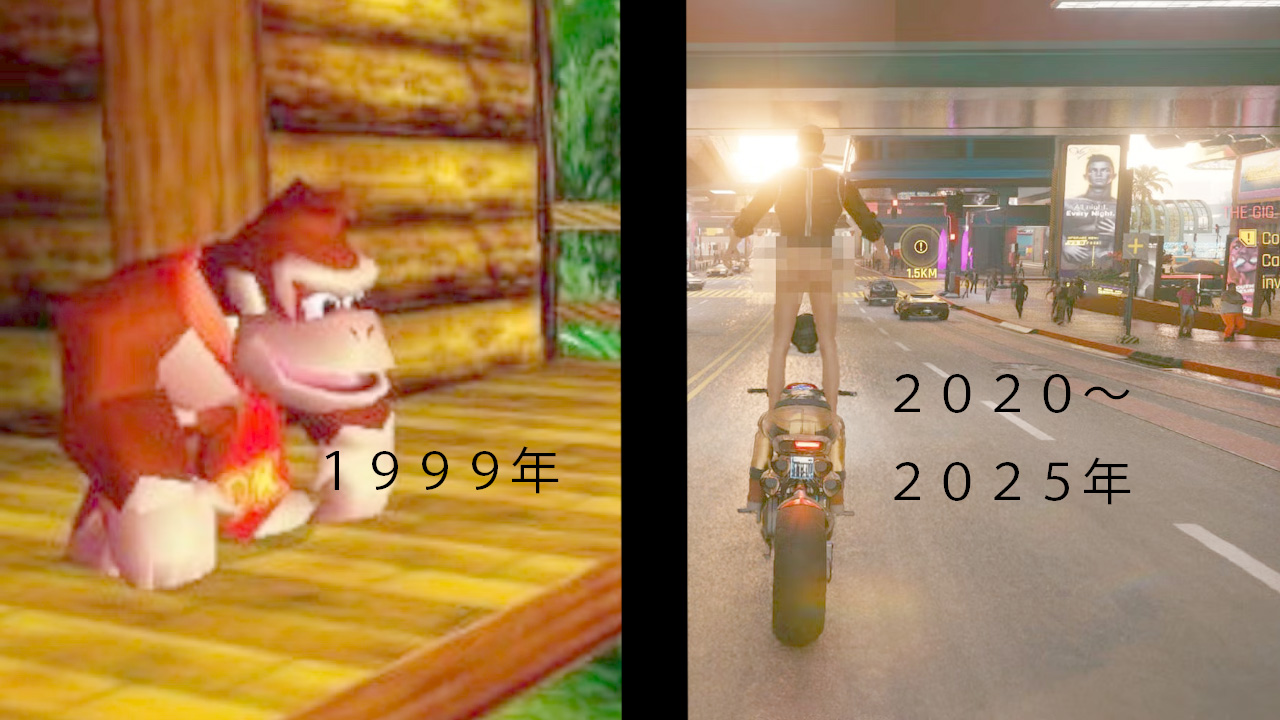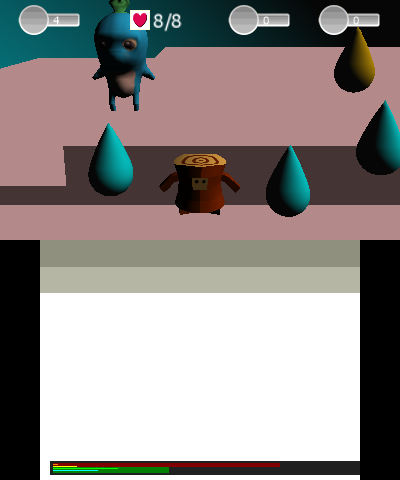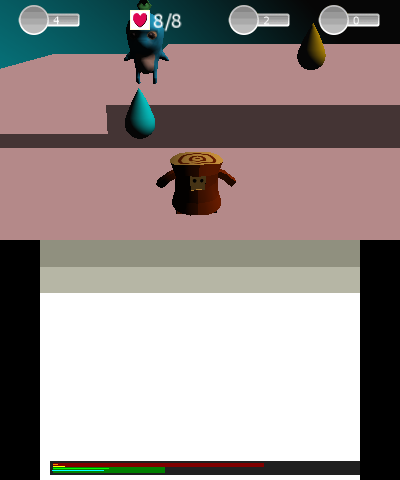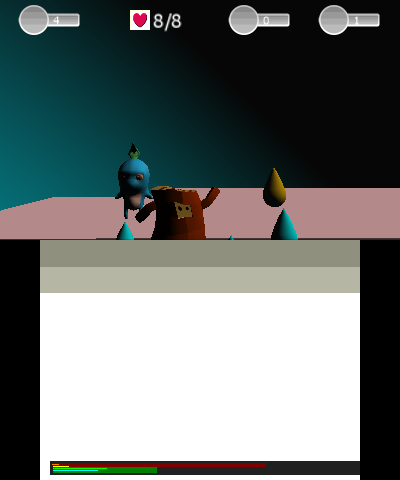現在のブログ
ゲーム開発ブログ (2025年~) Gamedev Blog (2025~)
レガシーブログ
テクノロジーブログ (2018~2024年) リリースノート (2023~2025年) MeatBSD (2024年)

【Game Development】What's Causing the Decline of the Gaming Industry?
People born before the 2010s each have their own "golden era" of gaming.
For those born in the 1960s, it was the arcade era; for those born from the 1970s to early 1980s, it was the Famicom and Sega Mark III era; for those born in the mid to late 1980s, it was the Super Famicom, Sega Mega Drive, and NEC PC Engine era; for those born in the early 1990s, it was the Nintendo 64 and PlayStation 1 era; for those born in the late 1990s, it was the GameCube, Xbox, and PlayStation 2 era; and for those born in the 2000s, it was the Wii, PlayStation 3, and Xbox 360 era.
I was born in the early 1990s, so my golden era was the Nintendo 64 and Game Boy Color.
However, I also love the GameCube, Game Boy Advance, Nintendo DS, Nintendo 3DS, and Super Famicom.
I still play games on these systems, reliving what I knew as good games.
I also own a PlayStation 3, PlayStation 4, and PS Vita, but I bought each for a specific game: Metal Gear Rising: Revengeance for PS3, NieR: Automata for PS4, and Gravity Daze for PS Vita.
I also have a Wii and Wii U, but they're collecting dust.
However, something changed in the 2010s.
Younger generations became less fond of games, the gaming community stopped being a nerdy space for gamers, and even true gamers can't keep up with new games.
Young true gamers also tend to prefer older games.
So, what happened?
The Gamergate Controversy
It all started with the Gamergate controversy.
The media tried to paint it as a "mass harassment campaign", but in reality, it was a hostile takeover of the gaming industry.
Around 2014, Gamergate erupted, and game journalists declared that gamers were no longer needed, slandering gamers while women developers were trying to enter the industry.
Gamers don't care about a developer's gender.
They only care if the developer makes good games.
However, game journalists ultimately won this battle, spreading outright lies.
The Wikipedia page on the topic is full of falsehoods.
However, the Chinese version still conveys some truth, so I use machine translation to reference that version.
Zoe Quinn and Brianna Wu are the two people responsible for making the gaming industry so bad.
Because of them, games stopped being about fun and became about politics.
Because of them, games stopped being for gamers by gamers and became for "everyone" by activists (where "everyone" means "everyone except gamers").
However, I believe this started much earlier.
Xbox One
The Xbox One announcement was a massive failure—so much so that Sony mocked it in their marketing campaign.
The Xbox One reveal event in 2013 focused on TV viewing, sports, and finally Call of Duty.
This sent a clear signal that games were no longer for gamers but for the so-called "everyone".
It confirmed gamers' fears.
What further frustrated gamers was that the Xbox One enforced always-online DRM.
When asked what to do without internet, Xbox's CEO responded, "Buy an Xbox 360".
This is similar to Nintendo's U.S. CEO telling gamers who complain that Switch 2 games are too expensive to "buy a Switch".
This PR disaster led to the Xbox One's failure, and the same could happen with the Switch 2.
Or perhaps, for some reason, it'll be forgiven, or they might sue gamers who don't buy the Switch 2.
Who knows?
However, I don't think this was the start of the gaming industry's death.
I believe it began earlier.
Nintendo Wii
With the Nintendo Wii, Nintendo clearly shifted its target audience from gamers to the so-called "everyone".
When it was still known as "Project Revolution", they released a trailer showing nearly all non-gamers playing with the Wii Remote.
The last person might have been a real gamer, but there's no way to confirm.
This was the first Nintendo console to outsell its predecessor, but it was also the first with almost no fun games.
Casual people bought the console solely for Wii Sports, while gamers bought it only for Mario Kart Wii, Super Smash Bros. Brawl, and maybe Super Mario Galaxy.
This was because those games were the only ones that felt like real games.
Even then, none of those games were particularly memorable.
Still, Nintendo kept making games for non-gamers, while the PlayStation 3 and Xbox 360 became the consoles for gamers.
However, when Sony and Microsoft jumped on the motion control trend with their own versions, it was the end for gamers.
Many say this started in 2014, but I believe it actually began in 2006.
Excessive Budgets
AAA games have ballooning budgets—not because they're generating huge profits, but because they're receiving massive funding from activist investors.
Investors hold all the power over AAA studios.
The problem is that gamers can no longer tell them what to do.
The good news is that if investors pull out, the studio collapses.
Even if studios follow investors' orders, investors will eventually pull out due to legal changes or insufficient profits.
As a result of relying on activist investors, studios lose creative freedom, can't experiment or innovate, and must follow trends whether they want to or not.
AA studios and indies are likely not tied to investors.
In other words, these studios are free to do what they want, can experiment and innovate, and are unbound by anything.
For example, in our case, even time isn't a constraint.
This is because 076 currently consists of just one developer, and no costs have been incurred yet.
All the budget we have is what I put into the vault each month, and it grows over time.
By the time costs arise (hiring artists or composers, age ratings, marketing, distribution, etc.), we'll have sufficient resources.
Extreme Protectionism
Extreme protectionism is rampant across the software industry, but nowhere is it more pronounced than in gaming.
The worst offender is Nintendo, which sues fans for making good games.
Examples like Project M come to mind, but recently there's also Palworld.
Nintendo applied for patents after Palworld's release solely to sue PocketPair.
In a sane world, this would be considered copyright trolling.
But since we live in a clown world, courts rule in Nintendo's favor, and PocketPair is forced to censor specific mechanics.
Patents are never about protecting ideas; they're always about ensuring small indie developers can't succeed.
Another issue with extreme protectionism is that all platform holders (Nintendo, Sony, Microsoft, Valve) are pushing gamers from physical games to games with digital options, and now to digital-only realities.
This is a problem because it allows one company to decide what you can and cannot play, and a banned account could mean losing all the games you've already paid for.
When digital stores shut down, no one can experience the games you played.
In my analogy, if you can't own a game, piracy isn't even illegal.
I used to publish games on the 3DS and Wii U eShops, but now my player base is entirely pirates.
What did I do about it?
Nothing!
Since the 3DS and Wii U eShops are already closed, whether someone obtains the games legally or illegally makes no difference to revenue.
Chasing pirates achieves nothing but bad publicity.
I released digitally because I didn't have the budget.
Obtaining age ratings for each region is extremely expensive for physical releases, and I had no means to distribute cartridges or discs.
This hasn't changed, but I still aim for physical releases with digital options because I don't want future generations to be unable to experience our work.
New Games Focus Too Much on Monetization
As a result of excessive budgets, predatory monetization schemes, in-game ads, microtransactions, paid DLC, and loot boxes have emerged.
Their budgets are so inflated that they must repay them with interest.
They know casual people don't want to buy games and gamers don't want to buy bad games, so they make games free to download and install but introduce predatory monetization.
This is why you don't see this in good AA or indie games.
If you see it in an AA or indie game, it's a sign the game is bad, and the developers know it.
New Games Are Released Unfinished
Before 2005, games had to be finished before release because patching wasn't possible, so no compromises were allowed.
Today, even physical releases can be patched.
As a result, games are released half-broken and gradually fixed over two years.
This is unacceptable.
Imagine Hollywood releasing a new movie with an incomplete storyline, forcing you to return to the theater over two years to see the story updated.
Even worse, review copies are often provided fully uncensored, leading the press to give higher ratings.
Once the game is publicly released, a day-one patch is applied, censoring content gamers expected.
Patches can serve good purposes, like fixing game-breaking bugs missed by QA teams.
However, this feature is being used for the wrong reasons.
This isn't limited to AAA studios; it's an industry-wide problem.
Indie and AA studios use patching capabilities for the exact same reasons.
I understand this practice is common in other types of software development.
When I worked on FOSS, I did it too.
However, unlike open source, game development environments have dedicated QA testers, approval processes, and publishing contracts.
Thus, there's no excuse for unfinished games!
All New Games Look the Same
Historically, the gaming industry rewarded studios for doing things differently from others.
Yet, everyone wants to do the same thing as everyone else.
This applies not only to game concepts but also to graphics.
Look at games on the PlayStation 5, PC, Xbox Series X and S, and to some extent, the Nintendo Switch.
They all look exactly the same.
This is because most of the industry has switched to Unreal Engine or Unity, using default shaders, default renderers, and default physics engines.
If a feature isn't provided by the engine, it doesn't get implemented.
As a result, every time I launch a game on Steam, I can instantly tell, before seeing the engine logo or store description, whether it was made with Unity or Unreal.
There are too many games using the same hyper-realistic graphics, and I can't tell them apart anymore.
Having seen those hyper-realistic graphics so many times, I now find them ugly.
After playing Steam games for a while, I went back to Nintendo 64 games and found their graphics beautiful.
Even though the textures are blurry and the models are low-poly, everything is colorful, each game has its own unique style, and the constraints forced artists and designers to be highly creative.
I played Super Famicom games and was amazed by the beauty of 2D pixel art.
I played GameCube games and was stunned by their beautiful graphics.
Even the Nintendo 3DS has beautiful graphics.
At least I know that realism won't be the focus of my upcoming games.
Speaking of which, a few days ago, while digging through an old Nintendo 3DS dev kit, I found a prototype I made 11 years ago that I completely forgot about.
It's a tech demo with just one level, working controls, physics, and everything else, but it's not a full game.
It was made to experiment with NintendoWare after releasing a Unity game in 2014.
Unfortunately, I no longer have the source code, but I do have the compiled ROM.
Here are some screenshots:



Modern Games Are Boring
In older games, clearing a game required skill, you had to unlock parts of the game, and the penalties for failure were harsh.
In modern games, skill is irrelevant in single-player modes, everything is easily accessible from the start or locked behind paywalls, failure is nearly impossible, or there's little penalty for failing.
The only place skill still matters is in online multiplayer, but the problem is that unless you've been playing since the game's release, you'll never reach the top.
Modern Games Think You're Stupid
Modern games have excessive hand-holding.
This might be fine for beginners, but people serious about games really hate it.
In the Nintendo 64 era, gamers were thrown into a world with maybe an initial explanation of the main objective, then left to explore freely and figure out what to do.
For example, in Super Mario 64, you're told Peach was kidnapped and you need to collect all the stars to save her.
Then you enter the castle, jump into a painting without knowing what to do, and a new level appears.
With little explanation beyond "there's someone on the mountain", it's your responsibility to explore the world and find the stars.
This allows you to reach the mountain's summit in highly creative ways the developers didn't anticipate.
Now, there are minimaps, clearly drawn paths, compasses showing where to go, meters indicating the distance to the next checkpoint, and detailed explanations of what to do next.
Collectibles or destructible objects are marked with yellow paint or white glows, "hidden" areas have obvious markings, and you're directed not to stray from the intended path.
This is a huge insult to gamers because it shows developers think you're not smart enough to play the game.
It would've been nice if there were options for "classic mode" and "retard mode", but instead, everyone is forced into "retard mode".
Political Correctness and DIE
The biggest problem is political correctness and DEI (Diversity, Equity, Inclusion).
Many people use excuses like "inclusivity" or "making it enjoyable for everyone".
In reality, it was never about that.
It's about pushing political agendas through entertainment.
Entertainment is a form of escapism.
Gamers play games to escape the problems and hardships of real life.
No one wants to experience those same problems and hardships in a game!
The second biggest problem, especially in Western games (+Capcom), is the inexplicable effort to make female game characters as unattractive as possible.
Some speculate the gaming industry believes making female characters unattractive will attract more women gamers.
If they truly believe that, those developers are not real gamers.
Women gamers, like men, want characters that look appealing.
Think about it.
If you're a man and the camera follows the player, forcing you to stare at the character's ass, you'd want something cute to look at.
Women feel the same, wanting something handsome.
In the West, it's probably the reverse, with men choosing male characters and women choosing female characters, but the same logic applies.
The Savior: AA and Indies
Unlike most other software development fields, the collapse of the gaming industry is inevitable.
However, unlike other fields, there is hope.
That hope lies in AA and indie developers.
The official difference between indie, AA, and AAA is the studio's budget size.
However, there's a pattern to defining them differently.
AAA is what we know today.
AA feels like the AAA of the 1990s and 2000s.
Indie feels like the 1980s and 1990s.
AAA plays it very safe, doesn't want you to own anything, and has better graphics.
Indie is highly experimental, wants you to own everything, and has inferior graphics.
AA is in between, still experimental but larger in scale, wants you to own everything, and has great graphics.
The future of gaming lies not in AAA but in indie and AA.
Choose indie for highly experimental concepts, AA for polished finished projects, and AAA if you hate yourself.
That's all